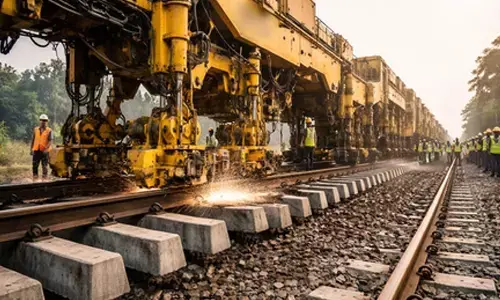Mount Everest – the world’s highest junkyard

Mount Everest – The World’s Highest Junkyard. Mount Everest Is Nepal’s Second Most Popular Tourist Landmark
Perhaps after the capital city of Kathmandu, Mount Everest is Nepal’s second most popular tourist landmark. From a distance, Mount Everest looks pristine, rising out of the Himalayas like a monument to nature’s power. It is only up close that the evidence of man’s neglect can be seen.

The South Co holds the key for mountaineers determined to climb Mount Everest. It is the launching pad from which all the expeditions make their way up to the summit. Considered the most hostile place on planet earth, it is 26,000 feet above sea level, lashed by 100 to 140 mph winds and frozen by temperatures running below minus 40 to 100 degree Celsius.
Over the years, it has come to enjoy the dubious distinction of having become the world’s highest graveyard.
Strewn with garbage and dead bodies of unfortunate climbers, mountaineers dread having to camp there today. Santosh Yadav, the Indian woman mountaineer who enjoys the distinction of having climbed the Everest a number of times has this to say – “ I spent the night resting my head against a rock which was jutting into the tent.
Imagine my horror when I woke up in the morning to find that it was not a rock but a dead body”.
Sir Edmund Hillary and Tenzing Norgay climbed Everest in the year 1953. Then it seemed to be a feat. Today anyone could do it. It is quite common to find 300 people from 15 teams simultaneously camped at the Everest Base Camp. The figures of climbers are rising. Two people climbed the summit in 1970, ten in 1980, but with the advancement of technology, as many as 72 had conquered the Everest in the year 1990.
The most disturbing fact is that with the increase in the number of successful climbers, there has also been a corresponding rise in mortality figures. Today the number of deaths per annum has crossed the 150 mark.
The reason for this sharp increase according to Sir Edmund Hillary I is that one can conquer Everest with the state of the art equipments which includes Titanium bottles, packed power bars and Gatorade for nourishment. The climbers wear six layers of space age thermal clothing, designed to give protection from temperatures upto minus 30 to 40 degree Celsius.
What is more, each climber has a hand held radio set for the progress of the expedition through satellites and computers. The climbers can call home and even send E-mails from the summit.
A majority of the climbers tend to blame the weather for the high number of causalities, but apparently this is not the case. According to Sir Edmund Hillary, “A storm does not strike out of the blue. There is sufficient warning, which if heeded, can prevent tragedy”. In today’s age of instant communication, such information is not hard to come by.
Another fact worth noting is that summit climb must be made as early as possible since the weather in this region tends to deteriorate by afternoon. Today, summit attempts take place even in the afternoon. According to Sonam Gyaltgen – “ Fischer and his climbers reached the summit after 2 P.M. and Rob Hall and his climbers reached their summit after 3 P.M. when the winds had reached hurricane velocity and a wintry storm was howling in all its fury.
As part of the Sustainable Tourism agenda, it is imperative to clean up the mess so that one of the world’s greatest natural wonders can be restored to its pristine glory. For many years, mountaineers worldwide have been clamoring that Government of Nepal pass a law making it mandatory for expeditions to bring down the bodies of dead climbers.
The Everest experience also has lessons with regard to mankind’s forays into virgin territories like the Antarctica and the unexplored realms of outer space, which are also getting cluttered with debris of our civilization.
Below, I quote the observation of Sir Edmund Hillary, a few month’s prior to his passing away in January 11, 2008, on the sorry state of affairs on Mount Everest–“ Those of us who climbed Everest in the early days were the lucky ones.
We had to defeat the problems ourselves. When we stood on the summit we had only our good friends for company.
These conditions can only be renewed by limiting the number of expeditions on the mountain at any one time. Governments must put safety ahead of financial profit. Only then will the challenge and joy of climbing Mount Everest return.
A golden rule, which is being flouted, is one of gradual acclimatization. But with climbers not having much time at their disposal, they want to reach the summit in the shortest possible time. From a test of endurance, discipline and skill, the climb has been transformed into a battle of modern technology”.
He further goes on to quote that – “I can hardly imagine myself climbing Everest in the present scenario. I remember vividly the time spent on South Col and my climb to the summit on May 29, 1965.
It was 9 A.M. when I stood on the summit. I took a long wheeling look from the highest point on earth. There was Makalu, Lhotse, Nuptse and Kanchenjunga looming large on the horizon and many other peaks far below us. I gazed north towards the Tibetan plateau and south towards the plains of India.
The view was unforgettable. Of all the emotions, which surged through me, the most dominant one was of humility and sadness. Having climbed the highest peak hereafter there would be nothing higher to climb since all roads would necessarily lead downwards”.
During his last years, Sir Edmund Hillary was dead against the annual increase in the number of expeditions and the commercialization of the climb, which has had sad consequences for many of those wishing to reach the summit.
During his lifetime, Sir Edmund Hillary was vehemently drawing the attention of the environmentalists and pointing out one critical area of neglect, which is care for ones environment.
Now with Everest already becoming a junkyard as well as a graveyard, a lot of combined effort and co-operation will be needed to clean up the mess.
And once cleaned, a restricted and environment friendly climb up the summit is the only way out to preserve one of the world’s greatest natural wonders. And this where a Sustainable Tourism policy will prove to be a step in the right direction.








